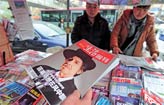Complacency threatens tourism drive
Updated: 2011-09-16 08:41
By Mike Bastin (China Daily)

It is too easy to be smug as China heads for the top spot in attracting tourists
In 1978, a mere 1.81 million tourists entered China, and the country was ranked 48th as a world destination; by 2000, 83.44 million tourists chose the Middle Kingdom, and China had climbed to 5th as a world destination; and by 2020 China is expected to be the world's top tourism "brand".
Good news indeed for China but is "brand" China and in particular "brand" Beijing ready for such an explosion in visitor numbers? Is there a professional brand building in place to ensure that China remains at the top?
Tourism destinations have evolved over the years to become branded experiences, and much can be learned from the literature on destination branding. The following destination branding model allows for the development of sustainable competitive brand advantage for both China and Beijing.
Beijing appeals primarily for its cultural heritage and political significance. Shanghai appeals for its commercial and retail amenities and Guilin for its nature-based environment.
Brand knowledge
Visitor knowledge and perception of a destination is of course a key determinant in any travel decision, but aside from the Great Wall and Xi'an's Terracotta Warriors many visitors to China know very little about Chinese society and culture. This suggests superficial brand knowledge of China from a cultural and geographical perspective. Many Europeans, for example, remain blissfully unaware of most second- and third-tier cities such as Nanjing and Chongqing despite their cultural and historical significance.
Chinese cuisine is often cited by tourists to China as a major reason for visiting the country but little is known about the rich variety of Chinese food across different parts of China. Most tourists are aware of Peking duck and sweet and sour dishes of Hong Kong and perhaps the spicy dishes of Sichuan. But little or nothing is known of the other major regional styles: Hui (from Anhui province in central China), Lu (from eastern Shandong province), Min (a seafood based cuisine from the southeastern coastal province of Fujian), Su (from Jiangsu province), Xiang (spicy food from central China's Hunan province), Xinjiang (food from the far north-west of China) and Zhe (from eastern Zhejiang province).
Brand China needs to far more promote both its rich, 5,000-year national history and its cultural diversity as tourist attractions. Regional cuisine should form an integral part of any brand building activity, as should regional dialects and customs.
Knowledge of modern China and rapid economic development is also crucial. Tourists often ask tour guides the most ridiculous and even condescending questions such as "Do you own your own car?" and "Do you know the capital city of America?" Having taught Chinese university students and delivered management training programs across China since the late 1990s, I am acutely aware of the incredible increase in living standards and material possessions that millions of Chinese now enjoy and also their vast repository of geographical and historical knowledge related to every corner of the globe.
Modern Chinese lifestyles will appeal to tourists and should form a key part of any brand China promotional campaigns.
Brand building when it comes to specific cities should involve consideration of suitable foreign cities with which to form a twinning partnership. Most of the world's major cities have long-standing twin-city relationships that serve to promote the tourist attractions of both. Beijing has no major world city as a twin, even though tourists, correctly, regard this city as the cultural center of China. New York or London would prove ideal candidates as Beijing's twin city. Subtle and sometimes major differences in the city's heritage need to be considered when searching for a suitable foreign city partner.
Brand image
Country and city images are usually formed through tourist experiences and word-of- mouth communication, but by far the most important influence is media coverage. Traditional media such as television, newspapers and radio still dominate here. Unfortunately this is an area where China, and to a certain extent Beijing, has a lot of work to do. Food safety and other corruption scandals all too often eat up media space. The Chinese government, as well as reacting to the latest scandal to hit the news pages, needs to develop more informative promotional campaigns that depict the real, modern, comfortable China A positive, assertive approach is called for.
The area of brand personification - creating a brand that is perceived by consumers as having human characteristics, can help in building a new, modern image of China and Beijing. Brand personification works best when famous people are firmly associated with a brand and China can now boast a plethora of internationally famous superstars from many different walks of life, for example Li Na, Liu Xiang and Yao Ming from the world of sport, Chow Yun-fat and Gong Li, both hugely successful Hollywood actors, and the internationally acclaimed pianist Lang Lang. These world famous Chinese people should be heavily involved in rebranding China's image across the world over the long term. More and more success internationally in sport and entertainment for people, especially younger Chinese people, should be seized upon and promoted vigorously as an example of the modern, vibrant China.
Brand promise
Even those most successful tourist destinations, of which China is fast becoming the leader, must never dwell on their achievements and allow complacency to set in. Brand promise is about new, exciting tourist attractions that will soon add to a destination's appeal.
Brand China can lay claim to amazing architectural innovation here with the 2008 Olympic stadiums such as the Bird's Nest and the Water Cube, as well as the aesthetically pleasing China Central Television building that sits majestically overlooking the central avenue that runs east-west through Beijing, Chang'an Avenue. Despite this, more is needed, especially in second- and third-tier cities that cannot boast anything like the avant-garde architectural initiatives of Beijing.
Perhaps most important of all is the issue of complacency as China moves into pole position. Many of the most successful brands soon fade as a result of neglect caused partly by the euphoric blindness brought on by such success. Product brands such as Jianlibao (a Chinese soft drinks brand that rivaled Coca-Cola in the 1990s) are prime examples of how quickly success can be followed by failure.
Brand building of China as a tourist destination as well as China's major cities and scenic "hot spots" needs a long-term, strategic plan, coordinated across the country with government, media and the most famous Chinese heavily involved. Tourism across China is an exciting, growing industry but lacks brand management, which is critical if sustainable competitive advantage is to be maintained in the face of intense competition.
The author is a visiting British professor of brand management at China Agricultural University. The opinions expressed in the article do not necessarily reflect those of China Daily.
E-paper

Way over the moon
High inflation rockets mooncake prices out of orbit for mid-autumn festival
From death matches to child's play
Tomb raiders remain a menace
Kicking for joy
Specials

Singing success
Western musicians bring much-needed impetus to live performance industry

Salary bonanza for bosses
Top boss gets 8.78 million euros a year, far more than the State enterprise CEO with highest pay

Kicking for joy
Swedish college student represents China in Taekwondo championships
